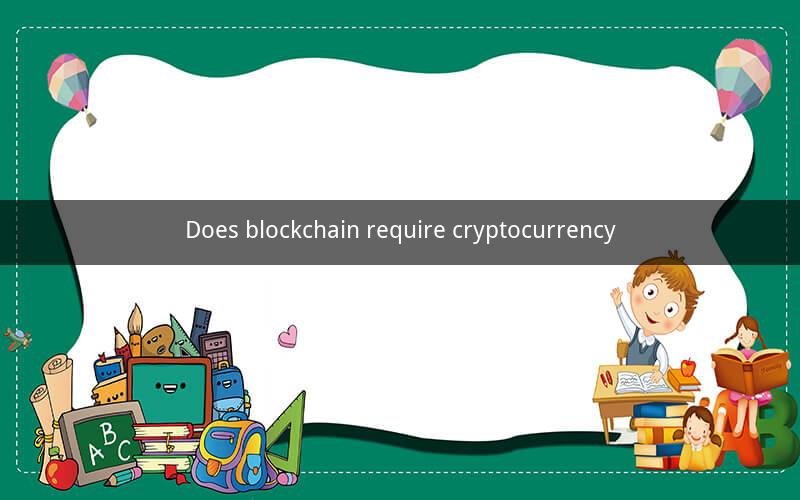
Table of Contents
1. Introduction to Blockchain
2. Understanding Cryptocurrency
3. The Relationship Between Blockchain and Cryptocurrency
4. Blockchain without Cryptocurrency
5. Potential Use Cases for Blockchain without Cryptocurrency
6. Challenges and Limitations
7. Conclusion
---
1. Introduction to Blockchain
Blockchain technology, first introduced in 2008 by an anonymous entity known as Satoshi Nakamoto, has revolutionized the way we perceive and interact with digital transactions. At its core, blockchain is a decentralized ledger that records transactions across multiple computers, ensuring transparency and security.
2. Understanding Cryptocurrency
Cryptocurrency, on the other hand, is a digital or virtual currency that uses cryptography for security. The most famous cryptocurrency is Bitcoin, which was created as the first application of blockchain technology. Cryptocurrencies are often associated with blockchain due to their shared origins and reliance on the decentralized ledger.
3. The Relationship Between Blockchain and Cryptocurrency
The relationship between blockchain and cryptocurrency is often seen as inseparable. Cryptocurrency relies on blockchain to record and verify transactions, ensuring the integrity of the digital currency. Blockchain, in turn, gains value from the existence of cryptocurrency, as it provides a real-world application for the technology.
4. Blockchain without Cryptocurrency
However, the question arises: does blockchain require cryptocurrency? The answer is not straightforward. While cryptocurrency is a popular application of blockchain, the technology itself can be used independently of digital currencies.
5. Potential Use Cases for Blockchain without Cryptocurrency
Here are some potential use cases for blockchain technology that do not involve cryptocurrency:
- Supply Chain Management: Blockchain can be used to track and verify the movement of goods and services, ensuring transparency and reducing fraud.
- Voting Systems: Blockchain can provide a secure and tamper-proof voting system, enhancing the integrity of elections.
- Identity Verification: Blockchain can be used to store and manage personal data securely, reducing the risk of identity theft.
- Real Estate: Blockchain can streamline the process of buying and selling properties, reducing costs and time.
- Healthcare: Blockchain can be used to securely store and share medical records, improving patient care and data security.
- Intellectual Property: Blockchain can be used to register and protect intellectual property rights, ensuring creators receive proper recognition and compensation.
6. Challenges and Limitations
Despite the potential use cases, there are challenges and limitations to using blockchain without cryptocurrency:
- Scalability: Blockchain networks can face scalability issues, especially when dealing with large numbers of transactions.
- Energy Consumption: Blockchain networks, particularly those based on Proof of Work, consume a significant amount of energy.
- Complexity: Implementing blockchain technology can be complex and requires specialized knowledge.
- Regulatory Hurdles: The regulatory landscape for blockchain is still evolving, and there may be challenges in implementing the technology in certain jurisdictions.
7. Conclusion
In conclusion, while cryptocurrency is a popular application of blockchain technology, it is not a necessity. Blockchain can be used independently of digital currencies, offering numerous potential use cases across various industries. As the technology continues to evolve, its applications without cryptocurrency will likely expand, providing new opportunities for innovation and efficiency.
---
Questions and Answers
1. Q: What is the main difference between blockchain and cryptocurrency?
A: The main difference is that blockchain is the underlying technology that enables the creation and management of digital currencies, while cryptocurrency is a specific type of digital currency that utilizes blockchain.
2. Q: Can blockchain be used for secure voting systems?
A: Yes, blockchain can be used for secure voting systems, as it provides a decentralized and tamper-proof ledger that can ensure the integrity of the voting process.
3. Q: How does blockchain improve supply chain management?
A: Blockchain improves supply chain management by providing a transparent and immutable ledger of transactions, which can help track and verify the movement of goods and services, reducing fraud and improving efficiency.
4. Q: What are the potential challenges of using blockchain in healthcare?
A: The potential challenges include ensuring patient privacy, integrating with existing healthcare systems, and addressing regulatory requirements.
5. Q: How does blockchain contribute to the protection of intellectual property?
A: Blockchain can contribute to the protection of intellectual property by providing a secure and immutable record of ownership and transactions, making it easier to track and enforce rights.
6. Q: Can blockchain be used to manage personal data securely?
A: Yes, blockchain can be used to manage personal data securely by providing a decentralized and tamper-proof storage solution, reducing the risk of data breaches and unauthorized access.
7. Q: What is the role of energy consumption in blockchain technology?
A: Energy consumption plays a significant role in blockchain technology, particularly in Proof of Work systems, where mining requires a significant amount of computational power and energy.
8. Q: How does blockchain address scalability issues?
A: Blockchain addresses scalability issues through various techniques, such as sharding, sidechains, and layer 2 solutions, which can help increase the number of transactions processed per second.
9. Q: What are the regulatory challenges associated with blockchain?
A: The regulatory challenges associated with blockchain include determining the appropriate regulatory framework for different applications, ensuring compliance with existing laws, and addressing concerns related to financial stability and consumer protection.
10. Q: How is blockchain technology expected to evolve in the future?
A: Blockchain technology is expected to evolve by improving scalability, reducing energy consumption, enhancing security, and integrating with other emerging technologies, such as artificial intelligence and the Internet of Things.